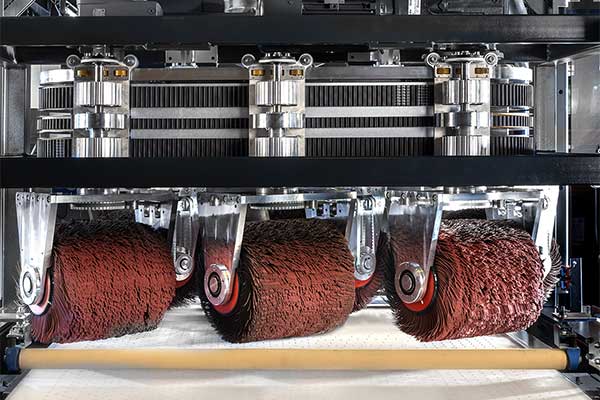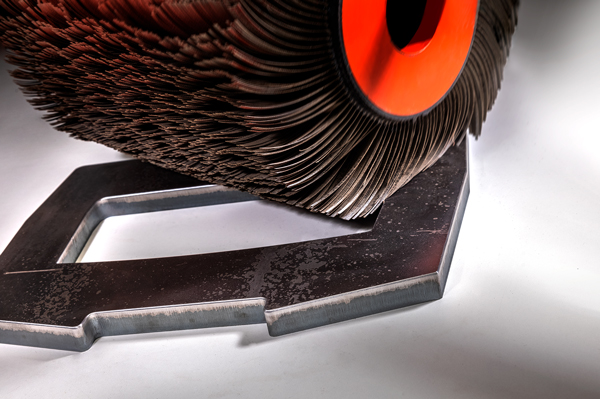

Round sheet metal edges with ProfiRounder by Heesemann
Sharp edges are not welcome in technology. In the case of parts that are to be provided with corrosion protection, sharp edges prevent a sufficiently thick layer of powder or paint on the edge. In addition, sharp edges are always a hindrance to the risk of injury both during assembly and, if applicable, for the end customer and when fitting. Rounding edges ensures that enough paint is deposited on the edge to ensure adequate protection against corrosion and excludes the risk of injury. Lasering and/or punching inevitably results in very sharp edges that must be rounded. The ProfiRounder from Heesemann is an efficient and powerful solution here.
Round sheet metal edges — how are the sharp edges created?
Sharp edges occur in particular in the following processing processes: • Laser cutting and laser fusion cutting• CNC punch• Waterjet cutting Even with thicker sheets produced with the processes • Autogenous flame cutting• Plasma cutting, the rounding of the edges is required for the reasons mentioned above.


Round edges: manual process
Manual rounding of edges with a flex or a file has considerable disadvantages. Depending on the thickness of the sheets and the thickness of the burrs, the work is very tiring, loud and exhausting. In addition, the worker is exposed to considerable dust pollution. In addition, there is always a secondary burr at the points where the sanding wheel exits the flex. The result is edge rounding with limited quality and high sick leave among employees. Automatic edging offers the solution: consistent, excellent quality with minimal workload.
Automatic edging in detail
ProfiRounder sanding machines for rounding edges are innovative systems with different sanding processes. Both the RUL unit with sanding blade rollers and the RUT unit with sanding plates are available for rounding edges.
Both units are characterized by the fact that the edges of the workpieces are machined 100% evenly. The RUL unit rounds the workpiece edges with so-called sanding lamellar rollers with a diameter of 350 mm and a width of 360 mm. 6 brushes rotate around both a horizontal and a vertical axis. In this case, the brushes are guided over the conveyor belt on a circular path, so that all workpiece edges are processed with exactly the same intensity, i.e. 100% evenly.
Lamella rollers are also suitable for very thick radii of 2 mm and more, for galvanized and foiled sheets — without damaging the zinc layer or foil, and also for parts with bends.
Thanks to its structure, it is the only unit on the market with pressure rollers in front of, between and behind the brushes, so that long narrow parts can be easily held on the conveyor belt even without a vacuum.